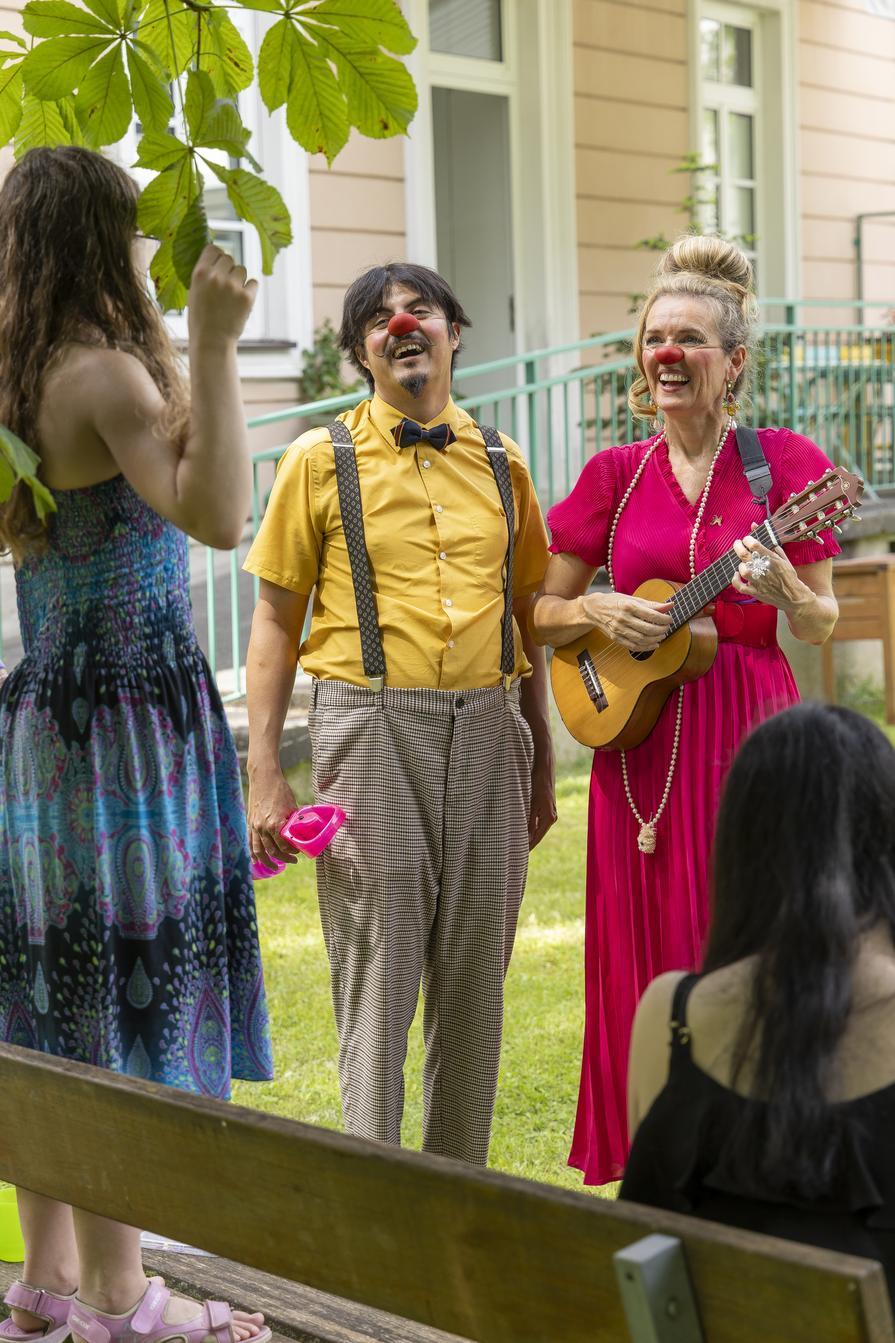New study: Clown visits reduce stress in child and adolescent psychiatric wards
We’re excited to share the findings of a ground-breaking research collaboration between our partner organisation ROTE NASEN Austria and the University of Vienna, recently published in Frontiers in Psychiatry (May 2025).
This study shines a spotlight on the role of healthcare clowning in child and adolescent psychiatric settings—an area with growing attention but still limited evidence-based research.
Over the course of four weeks, 29 children and adolescents aged 7 to 17 took part in regular clown visits within a psychiatric ward. Researchers assessed both psychological and physiological stress markers. They collected self-reported emotional and energy levels from the participants, along with salivary cortisol samples—a biological indicator of stress—before and after each clown interaction.
Key Findings
The results were encouraging. Children and adolescents consistently reported feeling less stressed after each clown visit, and described a noticeable boost in their energy levels. This suggests that the clowns’ presence not only helped to calm them but also offered emotional upliftment and engagement. While cortisol levels didn’t show statistically significant changes, they trended downward, suggesting potential physiological benefits.
Healthcare staff largely observed improved patient mood and ward atmosphere. Some also felt personally uplifted, though a few noted increased stress and reduced concentration, highlighting the need for better coordination.
What This Means for Our Work
This research reinforces a powerful truth: humour and joy are not a luxury—they are essential components of healing. It also reminds us that artistic interventions like healthcare clowning must be thoughtfully integrated into medical environments. When introduced with sensitivity and clear communication, they can enhance the emotional landscape for both patients and staff.
At RED NOSES, we remain committed to advancing the intersection of art and health through both creative practice and scientific research. Studies like this help us refine our methods, advocate for the inclusion of arts in healthcare, and demonstrate the tangible benefits of our work.
Looking Ahead
As we move forward, we aim to strengthen collaboration with medical professionals to ensure that clown visits are both joyful and seamlessly integrated into the care environment, so as to maximise the positive impact for everyone involved.
This study offers both inspiration and guidance. Even in the most serious settings, there is space—and need—for play, presence, and human connection.

